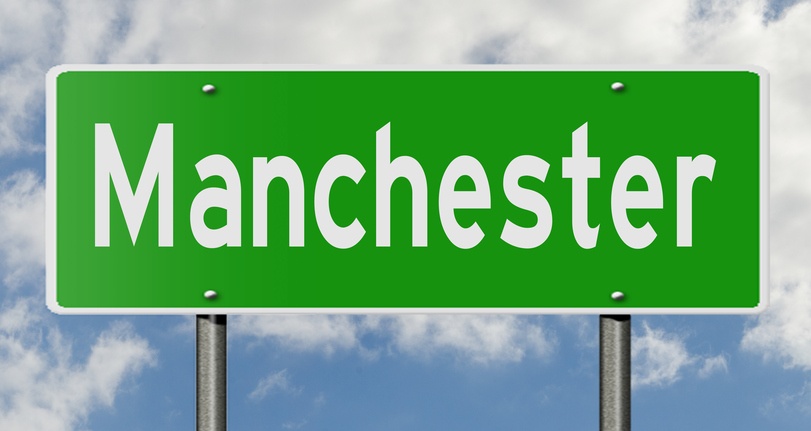Our Blog | Page 4
A Brief History of the Physician Assistant Profession

Physician Assistant, or PA, is an exciting healthcare profession celebrating its golden anniversary in 2017, but it’s showing no signs of old age. According to the Bureau of Labor Statistics, opportunities for PAs are expected to grow 30 percent by 2024, which is a much faster rate than most occupations.
What are the origins of the Physician Assistant profession, and why has it continued to be such an in-demand position? Here’s a closer look at this challenging and rewarding career along with the events that have shaped it.
What Is a Physician Assistant?
The American Academy of PAs (AAPA) defines Physician Assistant as “a nationally certified and state-licensed medical professional” who works in teams with physicians and other healthcare providers. After graduation and certification, PAs continue an ongoing course of education during the extent of their career.
While “Assistant” may sound secondary, PAs are skilled healthcare providers who make significant contributions to patient care. PAs are trained in general medicine with the ability to diagnose, treat and prescribe medicine, either on their own or in collaboration with a healthcare team.
The Birth of the Physician Assistant Profession
While the seeds of the PA profession were sown in 1940 in the rural South Carolina practice of Dr. Amos Johnson, who trained employee Henry Treadwell to become his assistant, the formal position developed in response to the critical shortage of medical personnel in the late 1950s.
In 1961 Dr. Charles Hudson, the one-time president of the American Medical Association (AMA), saw an opportunity to solve two problems by employing medics and corpsmen returning from war as “mid-level providers” supplementing the existing body of medical personnel. These people had the advantage of first-hand experience working with patients in the high-stress arena of the battlefield.
Dr. Hudson’s vision became reality four years later when Dr. Eugene Stead, Jr. of Duke University Medical Center launched the first Physician Assistant educational program in the United States, incorporating the fast-track medical training used during World War II. The initial class consisted of four former Navy medical corpsman, with three of them graduating in 1967.
Physician Assistants Become an Integral Part of Healthcare
A 1965 article in Reader’s Digest about the healthcare industry made mention of Duke University’s fledgling program, triggering a number of inquiries from ex-military corpsman. The school began hosting national Physician Assistant conferences and ultimately formed the American Association of Physician Assistants, now known as the American Academy of Physician Assistants.
As the Physician Assistant profession continued to grow, it was formally recognized by the AMA in 1971 and the organization began working on national certification criteria and standardization of practice characteristics. In 1974 the National Commission on Certification of Physician Assistants (NCCPA) was established and is still the only PA certification organization in the United States.
Physician Assistants in the Modern Medical Landscape
Today the AAPA states that there are more than 115,500 certified PAs across the country, with patient interactions numbering more than 350 million. The Affordable Care Act (ACA) of 2010 recognized PAs as primary care providers, along with Physicians and Nurse Practitioners, and empowered PAs to lead patient medical teams.
The public has also come to view PAs as an important part of quality healthcare. A 2014 Harris poll found that 93 percent of respondents believe that PAs:
- Are trusted healthcare providers.
- Provide excellent patient service.
- Will be part of the solution to the shortage of healthcare providers.
There’s no doubt that Physician Assistants have taken a valuable role in healthcare solutions, both individually and in tandem with other healthcare practitioners.
—
Are you seeking a new Physician Assistant position? Consider Elliot Health System.
![]()
Staycation Ideas for New Hampshire Physicians

Ah, the vacation.
No work. No stress. And no worries.
If you’re like most physicians, you can’t wait to get away from the hospital or clinic a few times a year. Perhaps you’ve escaped to the islands or traveled across the pond to explore Europe. Maybe you’ve dropped in on Disney World.
This year, it might be time to stay close to home.
New Hampshire offers an array of interesting, entertaining and relaxing staycation options. Here’s a look at a week’s worth of fabulous staycation ideas for New Hampshire physicians:
1) Monday: Head for the Hills
No matter the season, the White Mountains offer something for everyone. There’s shopping in the summer, scenic drives in the fall, skiing in the winter and outdoor dining in the spring.
Whether you’re into wildlife, water or a little fine dining, you can’t go wrong with a quick day trip to the hills. The White Mountain National Forest is less than a three-hour drive from Manchester, making it the perfect Monday getaway for your staycation.
You’ll love exploring the historic White Mountains, the areas quaint villages and opportunities to see why people from all over the East Coast make annual visits to the region.
2) Tuesday: Love the Lake
When a well-respected lifestyle magazine recognizes a nearby lake as one of the “prettiest lakes in New England,” you’d be remiss not to seriously consider it among your staycation ideas.
So why not take a drive over to Wellington State Park in Bristol and spend some time enjoying the local paradise that is Newfound Lake?
You’ll love the scenic views of the hemlock-covered mountains, the crystal-clear water and the largest freshwater swimming beach the state park system has to offer.
Learn more about Newfound Lake here.
3) Wednesday: Get Serious About Having Some Fun
Now that you’ve enjoyed the serenity of the White Mountains and the beauty of New England’s most beautiful lake, it’s time to let loose and get serious about having some fun — especially if you have kids.
Water Country over in Portsmouth has been entertaining New Hampshire families for three decades with its rides, slides, waves, rivers and pools. With 26 exciting acres of attractions, it’s the perfect way to spend a day burning off some energy during your summer staycation.
4) Thursday: Appreciate Art
By now you’re probably looking for something a little more refined and relaxing. On Thursday, make plans to visit the Currier Museum of Art in Manchester.
It boasts a collection of 13,000 American and European works of art in nearly every medium, from modern to decorative to contemporary. It also offers a full range of studio classes so you can do more than simply appreciate art–you can create it.
5) Friday: Eat Your Day Away
One of the best kept secrets about New Hampshire is that it’s an awesome place for foodies–and it’s small enough that you can eat your way through the state in a single day.
Start with breakfast at the Friendly Toast in Portsmouth, which has been ranked as the best breakfast spot in New Hampshire. Then make your way over to Skinny’s Pizzeria in Manchester for a little lunch. Then finish your day by enjoying dinner at The Common Man in Claremont, where you’ll feel like you are a part of history in an old mill located along the Sugar River.
Of course, there are many more great dining options in New Hampshire, so your Friday staycation ideas shouldn’t be limited to this list.
Saturday and Sunday: Get Out and About
There’s always something exciting happening in New Hampshire! Get out and enjoy the events!
—
Would you like to read more blogs like this one? Subscribe!
![]()
Why Manchester, NH is Attracting Top Physician Talent

Physicians have options.
With the country in the throes of a physician shortage, jobs are plentiful in almost all specialties, clinics, hospitals and parts of the country.
So why are so many medical doctors making their way to Manchester, NH?
According to the Henry J. Kaiser Family Foundation, there are nearly 1,900 primary care physicians and more than 2,000 specialists actively practicing medicine in New Hampshire–and most of them can be found working in Manchester.
Here’s a look at why Manchester, NH, is such an appealing place to work for top physician talent from across the country:
Compensation
Most physicians don’t practice medicine for the money, but compensation matters. In New Hampshire, the average physician compensation is about $300,000, according to a recent online article that ranked the top states in which to be a physician.
That’s more, on average, than physicians are paid in Virginia, New York, Massachusetts and Maine.
In addition, physicians in Manchester get to keep a larger share of their earnings because the state has no tax on wages.
Quality of Life
There is a lot to love about Manchester. It’s the state’s economic, social and cultural hub. With 110,000 people, it’s big enough to offer exceptional entertainment offerings yet small enough to allow physicians to play important roles in the overall health of their community.
In fact, Manchester physicians are a big reason New Hampshire consistently ranks at or near the top of “quality of life” lists. According to stayworkplay, New Hampshire is the second healthiest state in the country. And Manchester — the state’s largest city — is home to more physicians than any other community in “the Granite State.”
In addition, it’s safe, affordable and business-friendly.
This all adds up to a high quality of life.
Location, Location, Location
It has been said that location is everything when it comes to buying a house — and Manchester, NH, has an ideal location.
It’s just a short drive from some of the country’s premiere cities as well as the ocean, mountains and lakes.
It’s 53 miles from Boston and about a five-hour drive from New York City. The Atlantic Coast is less than an hour to the east and the brilliant White Mountains and Lakes Region can be reached in just 90 minutes.
Physicians who want to be near the action or the opportunity to escape love Manchester’s location in the heart of New England.
Stability, Support and a Focus on the Future
With so many changes taking place in the healthcare industry, many physicians are seeking stability and support–both of which are abundant at Manchester’s hospitals, clinics and specialty care centers.
Manchester healthcare systems have been consistently recognized as “HealthCare’s Most Wired” hospitals in the country by Hospitals & Health Networks magazine. They have been recognized by Nurses Magazine as some of the top places for nurses to work — and every physician wants to work with happy nurses. And they have been awarded the Press Ganey certificate for increasing patient satisfaction.
This type of stability, support and focus on building a brighter future for physicians, nurses, other employees and patients make hospitals in Manchester great places for physicians to work.
Opportunity
Manchester is one of those communities that truly allows physicians to use the full array of their expanded functions.
It’s large enough to need trauma, cancer and urology centers, but small enough so that it’s largest hospital is a community hospital.
This allows physicians to truly get to treat and care for patients who might otherwise be sent to specialty centers or seen only by specialists.
Opportunity knocks often for physicians who practice in Manchester, NH.
—
Are you searching for a new physician career opportunity? Consider Elliot Health System.
![]()
3 Little Known Physician Patient Communication Tactics

Good communication with your patients requires that you both recognize their expertise in their own health and respond to them with empathy. Patient-centered care like this may not always be easy, as shown by Marvel et al.’s finding that 90 percent of complaints about physicians relate to their communication style. Yet, the important yet lesser-known physician patient tactics of slowing down, appreciating patient world view, and having patients summarize discussion lead to significant improvements in clinical outcomes and overall patient satisfaction.
1. Slow Down
Marvel et al.’s research also revealed that physicians who communicate at a slow and deliberate pace are better understood by patients, especially when it comes to new information. Yet, on average, medical professionals only wait around 20 seconds before interrupting an individual’s initial description of their problems. To prevent missing information, you should use the following physician patient communication tactics:
- Pause frequently to allow listeners to form questions,
- Replace long monologues with short, customized explanations,
- Reinforce silences with open body language,
- And use questions and dialogue to check patient understanding.
In the process, be sure to tailor provided information to each patient, as, for instance, 20 to 40 percent of individuals 60 to 80 years old surveyed by the US Census never finished high school. The information that you gain will help you learn more about each person, adapt information to their needs, and improve their comprehension, all while minimizing emotional distress.
2. Engage with Beliefs
Physicians rely upon a biomedical perspective, but patients use cultural beliefs and personal values for decision-making. As a result, Ha and Longnecker note that providers confront distrust, competing therapies, or even lack of agreement to treatment. However, the best solution is to develop their cultural competency. In particular, the following physician patient communication tactics ensure collaboration, especially when dealing with cultural or language-based divides.
- Describe a problem medically and ask the patient to summarize it in order to reveal their bias,
- Recognize and respect patient world views, including values, beliefs, and expectations,
- Assess language fluency and world view to help adapt your communication methods,
- Be aware of your own cultural and personal biases and beliefs,
- Lastly, customize care to align with patients’ standards.
From there, you can identify and resolve potential barriers to communication and treatment alike. As Platt and Keating have shown in research on urinary tract infections, such an approach will improve adherence to the care plan, even as it reduces recurrence over time.
3. Close the Loop
Research from the American Academy of Family Physicians shows that half of all patients leave their doctor’s office having misunderstood something. In large part, this is due to the limited amount of time allotted for communication. Although this problem is unavoidable, a technique called “closing the loop” can help prevent it. In particular, this method involves the following:
- Start a dialogue about each of your top priorities,
- Then, alternate asking and telling to assess their knowledge,
- Evaluate how prepared they are for their stated goals,
- Next, set realistic, manageable, and measurable goals,
- Last, close the loop by having them repeat what was discussed.
These physician patient communication tactics make it possible to quickly and carefully communicate with patients by setting a clear agenda. Furthermore, closing the loop by having them verbalize their understanding gives you the chance to correct misunderstandings.
The above physician patient communication tactics may be less well-known than some like active listening. Yet, they are just as powerful in ensuring the clarity of your explanations of problems and related treatments. Furthermore, avoiding misunderstandings ensures a high quality of care, which will, in turn, raise patient quality of life.
—
Would you like to read more blogs like this one? Subscribe!
![]()
Taking Steps Towards a Long-Term Hospitalist Career

The field of hospital medicine arose in the 1990’s in response to hospitals’ need for greater access to primary care physicians. Hospitalists specifically coordinate patient care from admission to discharge. As Ratelle et al pointed out, there are now over 30,000 such inpatient practitioners, with organizations like the National Association of Inpatient Physicians and Society of Hospital Medicine. The field continues to grow, but it requires proficiency in multiple medical disciplines, as a day in the life of a hospitalist includes any number of tasks across the health care spectrum.
Hospitalist Duties
Hospitalists specialize in not having a specialization. In particular, they are experts in patient management and leadership of care personnel. According to Pak and Jones, they must have multiple skills on top of standard clinical expertise, including:
- The ability to communicate clearly with patients, families, and personnel,
- Problem-solving skills for prompt evaluation and treatment,
- Leadership of patients, staff, and hospital administrators,
- Teaching skills in analyzing and interpreting medical information,
- Compassion and interpersonal skills to provide comfort and care,
- And stamina to work long and wide-ranging shifts.
Altogether, these abilities ensure that hospitalists are able to balance, manage, and optimize the hospital health care system. In particular, they work to coordinate patients, family, residents and interns, nursing staff, healthcare professionals, and hospital administrators.
Educational Requirements
Until relatively recently, hospital medicine has been an uncommon career track. However, as Ratelle et al show, around a tenth of current internal medicine residents will end up in this growing field, with specializations in Family Medicine or Pediatric Internal Medicine. The Society of Hospital Medicine details how to become a hospitalist, as follows.
- Start by attaining a Bachelor’s degree in a related field.
- Then, complete 4 years at an E.S.-accredited medical school,
- Train for 3 to 9 years in a hospital residency of 3 to 8 years,
- Pursue other training, such as post-residency fellowships,
- Get a state license to practice, although standards vary,
- Lastly, pursue an optional board certification for specializations.
Licensing may require background checks, training, tests, or fees, and you must renew your credentials every 10 years. An increasing number of residency programs also offer hospital medicine specializations, as the number of related fellowship programs rises each year, as well.
Work Conditions & Compensation
Graduating hospitalists confront a growing and competitive market. However, as the US Bureau of Labor Statistics explains, compensation is high because the work requires fast decision-making in high-stress situations. In general, hospitalists work 12-hour days each day of the week, with every other week off, although schedules can be erratic. Usually, 3 to 4 hospitalists will work on day shifts, with only one at night, and each will care for 15 to 20 patients each day.
In 2014, the Society of Hospital Medicine estimated that there were around 44,000 practicing hospitalists in the United States. Since then, the field has only grown, and wages reflect growing need. In particular, the Medical Group Management Association’s recent survey found that hospitalists earn around $180,000 annually, with variation by location, teaching status, and practice size. In particular, Internal Medicine hospitalists on average earn $218,066 a year, while Pediatric specialists earn $160,038 per year.
The work of hospitalists is essential to coordinating hospital care. You should consider this field if your interests and abilities align with those detailed above. However, it is important to keep in mind that hospital medicine continues to evolve, with hospitalists taking on teaching positions and positions of authority in administration. Although their work is high-stress, hospitalists are essential members of health care teams and play a powerful role in shaping the quality and future of care in hospital contexts.
—
Would you like to join Elliot Health System as a hospitalist? Browse our open hospitalist career opportunities today.
![]()
5 Simple Ways to Stay Calm as a Physician

There is a growing awareness of the extraordinary stress levels facing practicing physicians in the United States. As noted by US News, doctors are fifteen times more likely to burn out than professionals in other fields. Furthermore, almost half of all primary care physicians report a desire to quit their job. To address this problem, medical practitioners must work on managing their stress, especially in emergency situations, in order to avoid burnout. Accordingly, it is essential for medical practitioners to know several key ways to stay calm under pressure.
Stay Positive
Physicians face some extremely stressful situations, but one key way to cope is to consider each situation in context. According to Entrepreneur, instead of forcing yourself to overcome anxiety, you should approach each issue as a challenge or opportunity to grow. Finding your calm should be the effect rather than the strategy, as focusing on how things could go right will help you balance and channel your emotions into more productive behavior.
Rehearse Your Actions
One of the most beneficial ways to stay calm is to rehearse for stressful situations. Visualizing potential complications for surgeries and other procedures, along with your responses to them, will help you prepare for real-life problems. For example, physicians should memorize the initial steps for dealing with different emergencies so that they can quickly take control of such situations. They should also familiarize themselves with how to stay calm in order to avoid making emergencies even worse.
Take a Deep Breath
Panicking is often our first response to stress, but physicians should assess their emotions for the source of anxiety. You can then work out whether and how to mitigate potential damage, even as taking action itself helps you cope with stress. One of the most important ways to stay calm is to nurture mindfulness. As Greater Good in Action has shown, mindful breathing, in particular, will not only shift your focus to your body but also calm your nervous system and prepare you for what comes next.
Manage Conflict
After balancing your own emotions, you should focus on clear communication. In particular, staying calm and de-escalating tense situations go hand-in-hand.
- You should start by managing your own emotions.
- Then, speak politely in a soft, non-threatening tone.
- Use non-confrontational language like “I” statements.
- Listen carefully, and re-state and clarify what you hear.
Throughout, set aside your own negative emotions, and focus instead on learning more about others’ perspectives. These tips are especially true for conflict in the physician-patient relationship.
Prioritize Tasks
In emergency situations, addressing the most urgent needs first is essential. Even experienced professionals can get distracted by certain injuries, but the most important tasks are often less obvious. You can only do one thing at a time, so recognize more and less urgent tasks to avoid getting flustered. Even scheduling your personal life can improve your resiliency as a medical professional and accordant ability to adapt to and bounce back from the stress of the clinical environment.
Although staying calm under pressure is utterly essential for medical professionals, we often forget the amount of stress we are under until it feels impossible to manage. At that point, even small amounts of stress can overwhelm an overtaxed person, medical professional or no. However, setting a regular relaxation routine can prevent the chain reaction of health problems that result from stress. You can use the above ways to stay calm to help avoid that burnout – and to preserve your ability to take charge in emergency situations.
—
Would you like to read more of our blogs? Subscribe!
![]()
10 Fun New England Winter Activities for Families

It can be tempting to stay indoors during the colder months, but New England winter activities will help you enjoy this awe-inspiring wonderland. From hiking and skiing to riding a sleigh, these family-friendly activities show it’s never too cold to enjoy New England.
1. Take a Hike
This region’s hiking trails are well-known for spanning a huge variety of landscapes. From mountain ranges to verdant forests and stunning coasts, New England’s trails are some of the most unique in the world. Discover New England offers a list of top trails, including the epic Appalachian Trail.
2. Swoosh through the Snow
Take to the slopes for one of the most popular New England winter activities. You can choose from various resorts with novice to advanced and family-friendly skiing or snowboarding. Cross-country skiing offers a more relaxed adventure, including night trips under the stars.
3. Go for a Skate
Many cities offer free or inexpensive ice skating at local rinks around the holidays. In contrast, Nestlenook Farm in Jackson, New Hampshire offers three acres of Victorian skate park. Bundle up, and take the whole family for a nostalgic afternoon, ending with piping hot cups of cocoa.
4. Ride a Sled
When the next snow day hits, take the whole family for a day of gleefully speeding downhill on your local sledding hill. The more adventurous can carve down mountains in a Mad River Rocket at Clearwater Sports in Vermont, though such New England winter activities are not for the faint of heart.
5. Go Tubing
Snow tubing can seem fairly strange at first, but sliding downhill on specially-groomed slopes is fun for children of all ages. No previous experience or special equipment is required, though some facilities offer night tubing or special programs for very young children.
6. Tour on Snowmobile
Exploring sparkling white snowscapes by snowmobile allows you and your family to explore breathtaking areas that might not be accessible otherwise. Options abound for tours and trails, with Maine boasting the most snowmobile trails of any state in the Eastern USA, at almost 15,000 miles.
7. Snowshoeing
This sport is one of the simpler New England winter activities for families. Many resorts offer rentals and guided tours for traipsing through peaceful winter landscapes. Vermont’s Trapp Family Lodge situates snowshoeing among spectacular views and Old World architecture.
8. Fish on Ice
Just as fly-fishing takes over New England’s lakes and ponds in warmer months, ice fishing dominates winter. You can have a more authentic experience of pulling fish out of the ice or take a guided trip with a heated fishing house. Consider taking classes from local, state Fish and Game Departments.
9. Dash through the Snow
Taking a sleigh ride is just as romantic as it sounds, especially when you have a warm hearth to return to. Bring the whole family, and the trip becomes a brisk adventure through a winter wonderland. The most famous place for sleigh rides is New Hampshire’s historic Mount Washington Hotel.
10. Mush Some Mutts
For a unique experience, head to Muddy Paw Sled Dog Kennel in New Hampshire, and can take your family on a dog-sledding tour, during which you’ll meet the dogs and work with the team. Sunny Grange Bed and Breakfast also offers practical classes on harnessing and anchoring dogs.
From skiing to snowmobiling and so much more, New Hampshire winter activities are well worth braving the cold. The Travel Channel offers helpful tips, including adult options like zip-lining, ice climbing, and winter camping. Whatever you choose, bundle up, plan ahead, and be prepared for the adventures that await you.
—
Are you craving more outdoor adventures? Check out our guide!
![]()
New Year – New Gear: 5 2017 Apps Every Physician Needs

Mobile health continues to expand, with SNS Research estimating mHealth’s market at over 20 billion dollars a year. While many apps target patients, healthcare providers can also use them to improve their practice. With around 100,000 applications in major stores, purposes range from screening to drug identification, education, and more. Here are some of the most noteworthy 2017 mobile healthcare apps.
1. DynaMed Plus
This recent app from DynaMed includes expanded graphics, images, and specialty content, along with clearer recommendations and semantic search. As iMedicalApps notes, DynaMed Plus is competing with the standard point-of-care reference, UpToDate. For physicians, this translates into a friendlier search window with predictive results, expansive treatment summaries, convenient hyperlinks to PubMed, and Micromedex drug information. Altogether, this evidence-based app is an essential tool for answering your own and patients’ questions on a daily basis.
2. CareKit Apps
As The Verge reports, Apple’s open software platform, CareKit, includes four modules for health management apps: patient care, symptom measurement, treatment impacts, and communication with providers. CareKit apps enable providers to remotely monitor activity, weight, diet, symptoms, and progress. Examples include progress-tracking apps like Start and more specific apps like the diabetes-monitoring One Drop. Among 2017 apps, CareKit options still have to demonstrate quality and privacy control, though information is already anonymized.
3. Epocrates
Epocrates is the top drug information app for point of care support. According to iMedicalApps, its latest iteration includes an extensive drug database with information on dosing, interactions, adverse effects, and pharmokinetics – all of which is searchable by generic name, brand name, or conditions. A helpful pill identifier and multiple clinical calculators round out this multipurpose app. The paid, Plus version adds clinical treatment guidelines, a disease database, an ICD-10 code lookup, and an alternative medication database. Although Epocrates’ price is relatively steep, its many features make this app a useful and essential tool for many healthcare providers.
4. GoodRx for Doctors
While GoodRx helps patients find the lowest prescription prices, the medical professional version adds a comprehensive drug guide. Unlike Epocrates, GoodRx for Doctors also incorporates professionals’ experiences and charts on potential benefits. At the same time, each drug or treatment profile provides a guide to the best available prices and discounts. As pointed out in the iMedicalApps review, GoodRx for Doctors thus helps healthcare providers keep up with the latest medications and treatments and quickly email or text the low prices to patients.
5. RxUniverse
RxUniverse was launched last year by Mount Sinai Health System of New York as an app management platform. It integrates digital health tools into medical practice through the evaluation of 2017 apps in terms of their evidence-based benefits. Accordingly, RxUniverse features a curated list of apps alongside tailored educational content, all of which directly interfaces with the patient’s electronic health file. Perhaps most importantly, RxUniverse allows healthcare providers to directly prescribe curated apps through a link sent to patient’s digital devices.
With these tools on hand, you can get the New Year off to a good start. Although not all apps are free to use, many are, and many more are cost-effective. Options like RxUniverse, in particular, provide a means to adapt to the changing landscape of modern healthcare and even the growing range of 2017 apps. Choose carefully, and you can enhance patient engagement and your practice all in one app.
*Please note that this blog does not imply endorsement by Elliot Health System of specific physician app technology choices.
—
In addition to apps, it’s crucial to join and interact in relevant physician forums to keep up with the latest medical practice trends. Check out our Physician Forum Guide to learn more.
![]()
How to Maintain a Healthy Diet as a Physician

Physicians don’t get sick.
That’s the common refrain propagated by healthcare professionals across the country, according to a 2012 article published in the British Columbia Medical Journal that examined the lifestyle and preventive health behaviors among physicians.
And, not only are physicians supposed to be healthier than their patients, they’re also more independent, competitive and high achieving, according to the article’s author.
Any attention physicians pay to their own needs can only be viewed as signs of weakness.
Of course the article’s authors found that physicians are actually just like everyone else. They neglect their own health, work too much, sleep too little, don’t eat as well as they should and become ill.
That’s the bad news.
The good news is that the profession is starting to pay attention to the needs of physicians beyond the exam room, doing away with the stigma attached to programs designed to help physicians deal with physicians’ physical, mental and emotional challenges.
But physicians still have to be willing to step up and take care of themselves by exercising, sleeping, caring for themselves and eating right. While it can be difficult to find time to work out and sleep, it’s relatively easy to maintain a healthy diet.
Here’s a look at three easy ways to maintain a healthy diet while succeeding in the practice of medicine:
1) Grow your own greens
There’s something to be said for growing your own vegetables. The benefits are both intangible and tangible, according to an article published in the Harvard Health Letter.
When you grow your own food, you’re more likely to eat more vegetables, avoid fertilizers and pesticides (or at least decide which come in contact with your food) and reap the benefits of freshly picked produce, which contain more nutrients than store-bought vegetables.
It’s never too soon to start planning your garden–and you can start planting seeds indoors during the winter months before transplanting them to your garden after the last frost of the spring.
2) Outsource your salads
Sometimes growing your own greens simply isn’t plausible. Sometimes you need to outsource the production of your vegetables to someone who grows them locally, cares about quality and makes them available almost as soon as they are harvested.
For these moments, there is the Manchester Farmers Market.
The market draws farmers from throughout New Hampshire, who sell locally grown produce, meat and certified organic products. If you don’t have time to care for your own garden, consider stopping by the Manchester Farmers Market from 3 to 6:30 p.m. every Thursday in June, July, August, September and October.
It’s a great way to get the benefits of garden-grown vegetables without having to do the work yourself.
3) Update your Rolodex
Your Rolodex can either help or hurt you. It can either be the savior of svelte or the reason you need to invest in new clothing.
Don’t let it become the bane of your ability to maintain a healthy diet.
Instead of relying on the same old restaurants that deliver the same old fried food every day, update your Rolodex with restaurants that specialize in healthy options.
New Hampshire Magazine has published a list of the “healthiest restaurants in Manchester,” and it’s well worth checking out. You’ll find restaurants as committed to the community’s health as you are–and their menus are chock full of healthy options, void of high calories and cholesterol but rich with flavor.
Eschewing the typical “eat-and-treat” options that you’ve been fueling up on in favor of healthier options will go a long way towards helping you maintain a healthy diet.
—
Elliot Health System is passionate about helping providers with their work-life balance. Would you like to join us?
![]()
Favorite Ski Destinations Near Manchester, New Hampshire
 New Hampshire is known for low taxes, a high quality of life and an unwielding commitment to living free.
New Hampshire is known for low taxes, a high quality of life and an unwielding commitment to living free.
Perhaps it’s time to add another item to the list: skiing.
With the White Mountains as its backdrop, New Hampshire has established itself as the go-to state for thrill seekers and snow enthusiasts alike. And Manchester, with its plethora of dining and entertainment options, is the perfect place from which to launch your excursions.
Here’s a look at five of the top (or most convenient) ski destinations near Manchester, New Hampshire:
Loon Mountain
If you look at any list of the top ski destinations near Manchester, Loon Mountain is sure to be near the top. With a 2,100-foot vertical drop, 61 trails, an array of terrain and 11 lifts, the 90-minute drive from Manchester is well worth it. Many people make the drive for the skiing and terrain park, but wind up staying for the dining and lodging, which receive rave reviews.
Single-day lift tickets start at $48 for novice skiers and climb to $95 for a Saturday or Sunday.
Learn more about Loon Mountain.
Bretton Woods
Bretton Woods is known as “New Hampshire’s largest ski area,” but what really sets it apart is the snow quality. Ski Magazine has ranked Bretton Woods as “#1 in the East” for snow quality for four consecutive years. Combine that with 62 trails on 464 acres and you’ve got one of the best ski destinations near Manchester that is well worth the nearly two-hour drive. It’s also one of the top-rated locations for terrain parks.
Single-day lift tickets will cost you between $60 and $90. And make sure to ask about the night skiing options.
Learn more about Bretton Woods.
Waterville Valley Resort
If you’re looking for a resort that is steeped in history, look no further than the Waterville Valley Resort. For decades, it’s been a popular destination for snow lovers and ski enthusiasts from Boston, including members of the Kennedy family.
Waterville Valley Resort boasts 53 trails, eight lifts and an array of other activities for the entire family–dog sled excursions, snow tubing, indoor ice skating and nordic skiing. It’s location is just close enough to keep you close to home and work, yet hidden enough to allow you to escape, which is why it’s long been the go-to place for elected officials and community leaders to escape for a day, weekend or week in the wilderness.
Learn more about Waterville Valley Resort.
Attitash Skiing
With 68 trails spread across 500 acres on two mountains, Attitash offers something for everyone. There are challenging runs, wide-open cruisers and those that wind through large swaths of red spruce and balsam fir. The highlight, though, might be the New Hampshire’s original freestyle terrain parks, which offer X-Game-like opportunities to push yourself to new limits.
Attitash is in the heart of the Mount Washington Valley, two hours from Manchester.
McIntyre Ski Area
It’s not the biggest. It won’t blow you away with altitude. And more experienced skiers aren’t likely to be pushed to their limits. But, McIntyre Ski Area is the only ski destination located in Manchester, and its a great way to spend a getaway day with the kids. With 200-vertical feet of terrain, nine trails, learn-to-ski-classes for all ages, a terrain park and eight tubing lanes, McIntyre Ski Area is the perfect place to introduce beginners to the joys of outdoor winter fun.
Full-day lift tickets are between $30 and $38, and kids ages 2-3 as well as seniors 65 and older always ride for free.
Learn more about McIntyre Ski Area.
—
Are you still craving more adventures? Check out our free Outdoor Adventure Guide.
![]()
















Recent Comments